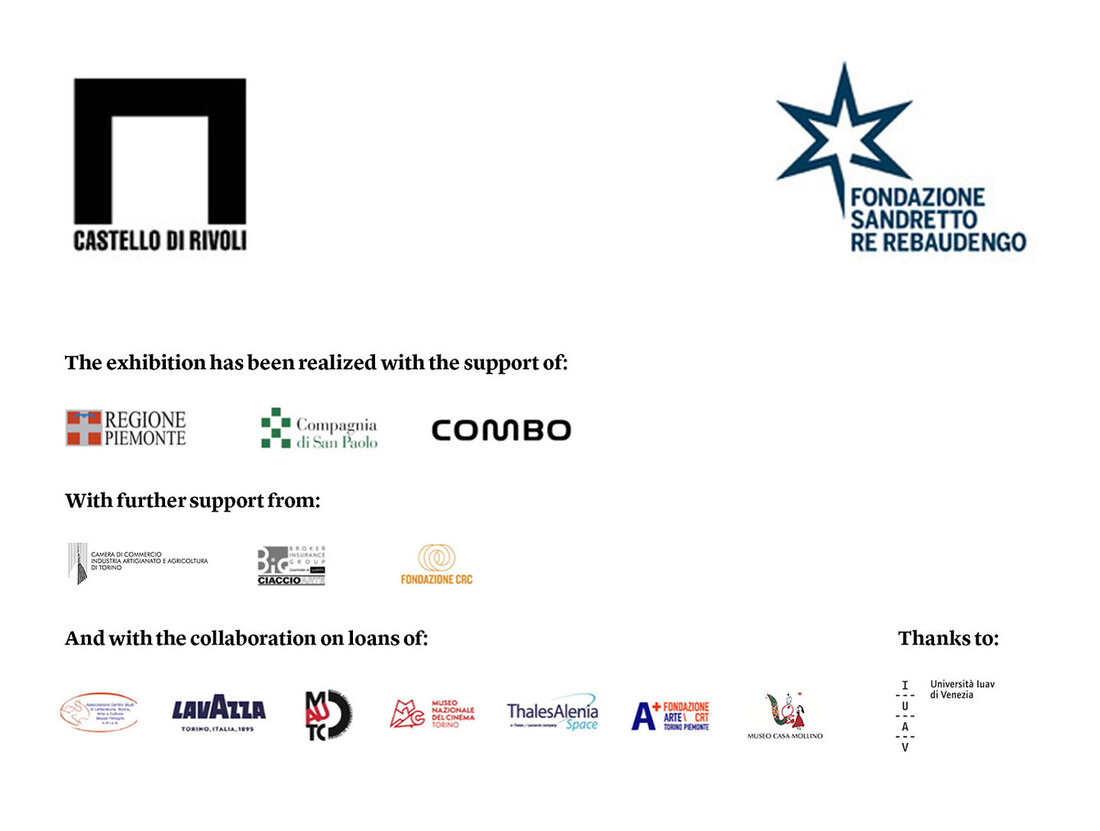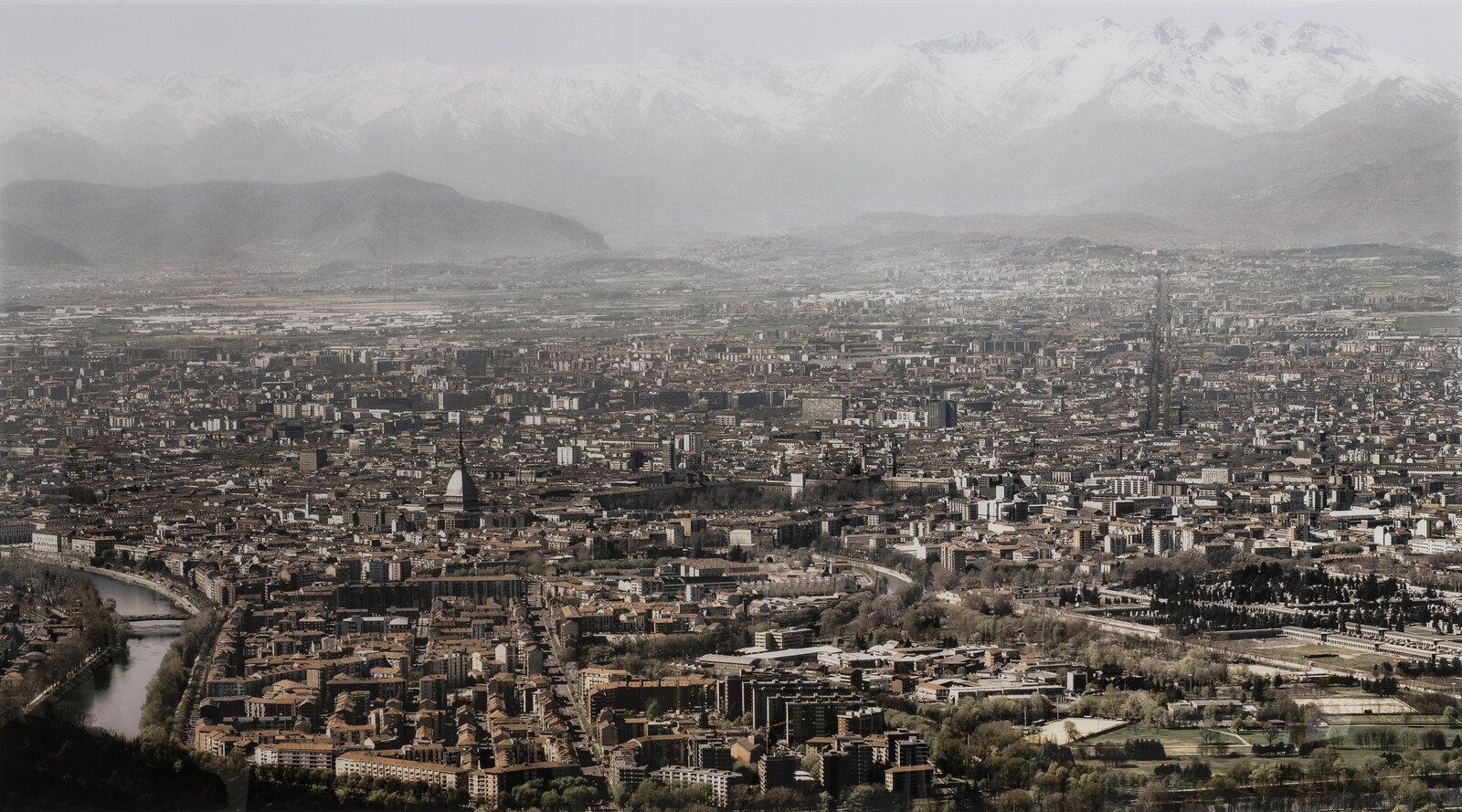May 8–July 20, 2019
Campo dei Gesuiti
Cannaregio 4878
Venice
Italy
… Pistoletto, Castella, Gozzano, Ricuperati, Mollino, Gasperl, Leotta, Perrone, Pellizza da Volpedo, Ceylan, Pinot Gallizio, Rama, Ghiotti, Simondo, Dionisio, a Fiat 500 from 1957, Olivetti, the orbiter of the Mars Rover, the Fiera del Tartufo, some Barolo wine, a new coffee machine for outer space and pre-cinema optical devices…
Drafted by Marianna Vecellio
Preview: Tuesday May 7, 5-7pm
6pm performance by Michelangelo Pistoletto Applauso al mare (Applause to the Sea, 1968-2019)
Wednesday May 8, 6:30pm
Pavilion / Papillon: the Use of National State Identities in the Cultural Field
A panel discussion with Carolyn Christov-Bakargiev, Ludovica Carbotta, Taner Ceylan, Renato Leotta, Hans Ulrich Obrist, Markus Reymann, Gianluigi Ricuperati and Marianna Vecellio
Little one, what are you doing all alone?
I’m playing at the Great Flood.
–Guido Gozzano, Cocotte
The Castello di Rivoli Museum of Contemporary Art and Fondazione Sandretto Re Rebaudengo present May you live in interesting times at the foot of hills. How to lie low and ski at once. The Piedmont Pavilion, an exhibition born from a concept by Carolyn Christov-Bakargiev, Director of Castello di Rivoli Museum of Contemporary Art and Patrizia Sandretto Re Rebaudengo, President of Fondazione Sandretto Re Rebaudengo.
Drafted by Marianna Vecellio, the exhibition takes place at Combo in Venice, which also opens its doors to travelers and Venetians on May 7.
The Pavilion is built as a theater piece, or as an imaginary government. The characters are:
Prime Minister: Marianna Vecellio
Minister of the Word: Gianluigi Ricuperati
Minister of Communications: Irene Dionisio
Minister of the Sea: Renato Leotta
Ministers Without Portfolio: Vincenzo Castella, Bepi Ghiotti, Diego Perrone, Michelangelo Pistoletto
The Piedmont Pavilion includes existing works of art, as well as furniture, some products of the Piedmontese industry and territory, the TGO orbiting probe (Trace Gas Orbiter) of the European ExoMars mission, optical devices that anticipated the birth of cinema, but also a precious bottle of Barolo from the artist Pinot Gallizio’s cellar, a 1950s artist project on the Truffle Fair and the story of a revolutionary espresso machine for outer space. There are also two new artworks.
The Piedmont Pavilion is a multi-faceted device and space, a network of facts, human beings and the things of the world, capable of illustrating a real and false place at the same time. A regional pavilion that is also transnational, a temporal, historical, artistic, cultural, technological stratification that is also a game, fake news, a theatrical piece and a territory that no longer exists as a representation of a confined area, but as a measurer of experience.
In an era of globalization and digitalization, of being “in Piedmont in Venice,” this “off” Biennial exhibition explores the meaning and nonsense of identity claims; it wants to welcome and collect, not without a touch of humor, Piedmontese artistic and creative expressions that speak of being incorporated, of urban and rural life, of the daily and the cosmic, in close continuity, of being absolutely “in” and absolutely “out,” and of a certain condition of “orphanhood.”
The gaze beyond the line, beyond barriers and fences, beyond mountains, capable of exposing oneself to thought and to the relationship with the other—is this perhaps not the most intimate figure of Piedmont? And art in its tension towards elsewhere has perhaps not always been the underground plot that leads to giving meaning to the foolish, as an optical instrument capable of capturing the hidden detail behind which is often hidden the inhumanity of the human? The Piedmont Pavilion offers viewers an unprecedented extraterritorial and cross-disciplinary space, the playful and very serious attempt to reconstruct a coherent existential warp in an increasingly chaotic world dominated by temporary and violent identities, in which only the ephemeral appears reassuring.


